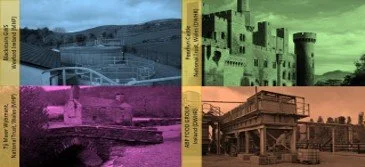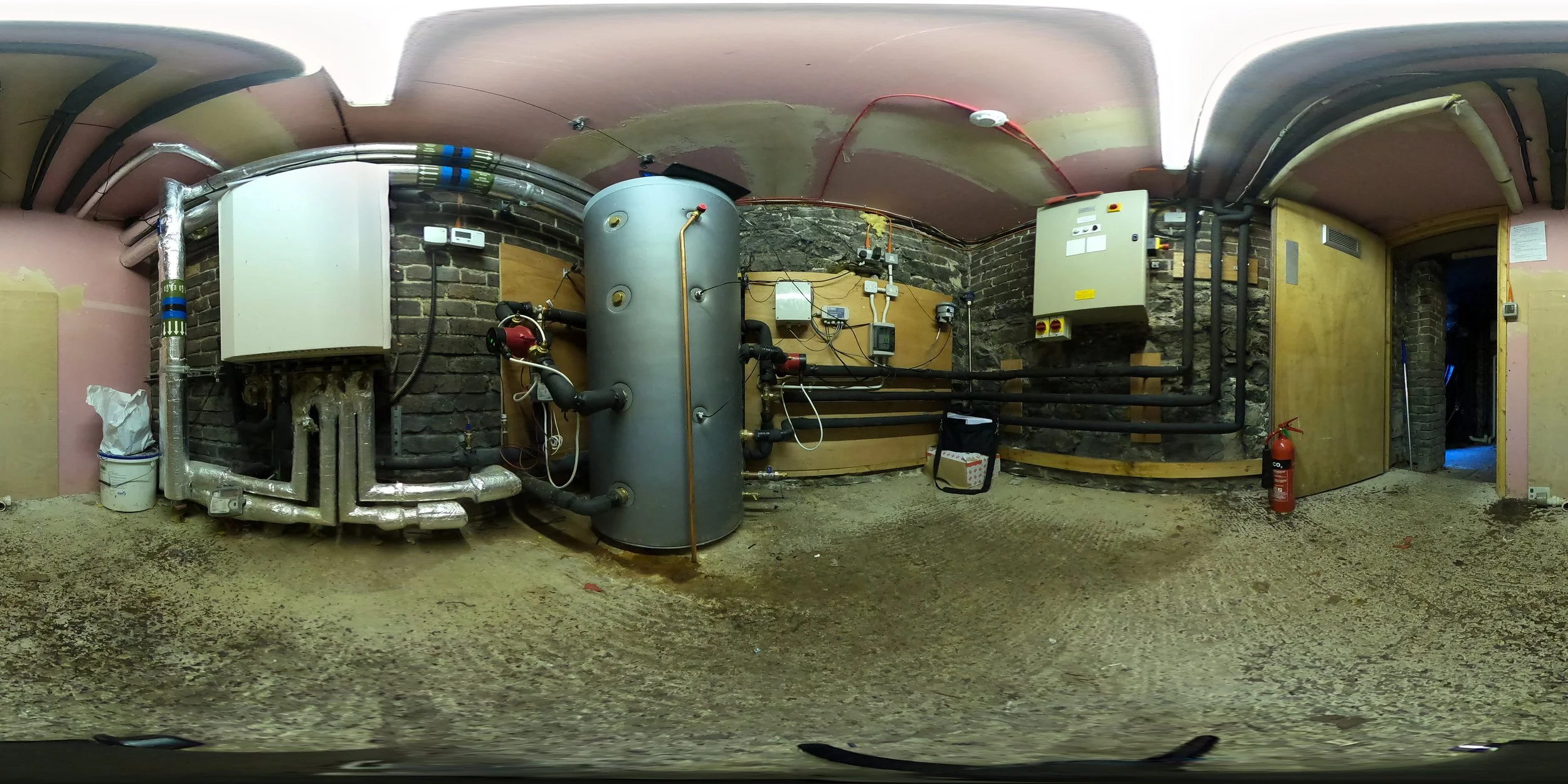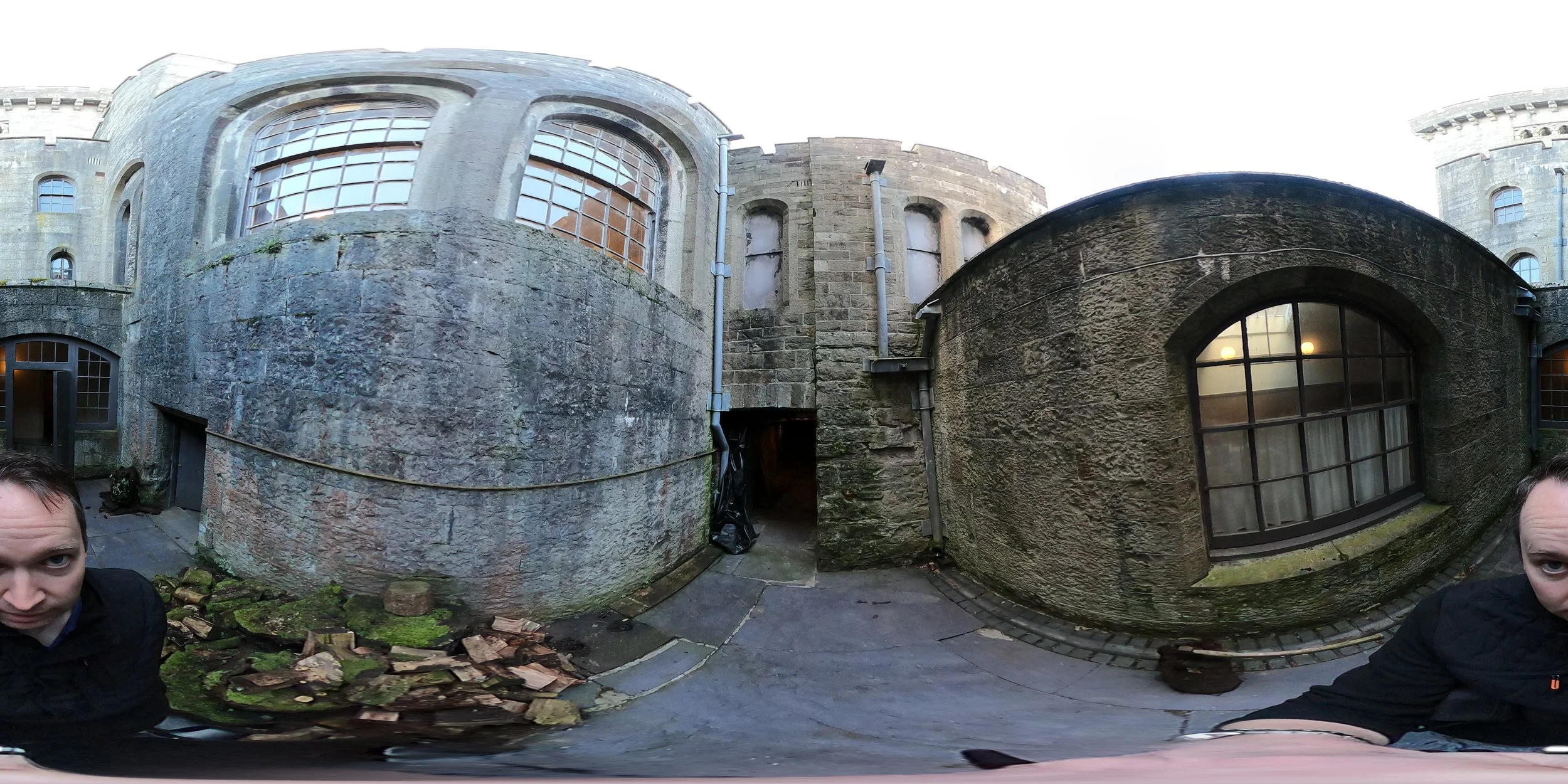Roberta Bellini and Madhu Murali
As part of the project, four demonstration sites have been set up to showcase real-life applications of micro-hydropower (MHP) and drain water heat recovery (DWHR) systems in Ireland and Wales.
In 2019 we hosted two launch events: the first took place in May in Ireland at the water treatment plant of the Blackstairs Group Water Scheme demonstration site where a pump-as-turbine is installed at the inlet of the raw water tank and has been generating electricity, reducing costs and emissions of the water provider. The second event took place in Wales in November 2019 and here an example of run-off- river MHP was demonstrated. Then in early 2020 the pandemic hit and questions around the two remaining demonstration sites arose. While the ABP DWHR system was not ready for an official launch event, the opening for the site in the Tea rooms at Penrhyn Castle had to be postponed.
The spell of virtual meetings and workshops offered an opportunity for reflection. We asked different questions: how amenable are the sites? Are they in the background or foreground of the locations where they are installed? Looking ahead, what will the future of these examples of working novel technologies be? How do we make sure all the hard work is not lost but continues to create opportunities for knowledge sharing, demonstration and up-take of the technologies? How can we maximise the potential by increasing accessibility and outreach?
We still haven’t got all the answers, but we definitely have some ideas! And here is how they developed. From the launch events of the demonstration sites, we learnt that people enjoyed the opportunity to see the technology in operation and to ask questions to all parties involved in the development, installation, and operation. From our series of online events, we learnt that we could reach more people with a broader geographical spread. From students in the primary and secondary schools whom we worked with, we learnt that being able to see the demonstration site, by means of a video for example, would enhance their experience. So, we started to explore ways to combine all these lessons learnt. And we decided to create virtual tours of the demonstration sites using 360° photos: these are panoramic images which can be moved through in all directions to provide a complete and interactive 360° field of view of the area around the camera. A common type of 360° photo you may already have experienced are the Google Street View photos that can be viewed on Google Maps showing urban streetscapes. The idea for these virtual tours came from attending a webinar by fellow Interreg project CCAT in 2021 all about VR experiences. You can watch the videos on the project Youtube channel here. The talk by Dr Gareth W. Young, V-SENSE project at Trinity College, is what really got us inspired!
Our work in this area started with an investigation into capturing 360° photos without the use of specific hardware. This was ultimately unsuccessful as app-based solutions were difficult to use in smaller spaces and using a regular camera and tripod was too laborious. Subsequently, we were able to borrow a camera from the V-SENSE team with the capability to take 360° photos. We would like to offer a special thank to Gareth at this point for his help with setting up the tours and for lending us the 360° camera. The use of this camera resulted in developing a catalog of 360° photos showing various relevant aspects of our demonstration sites. You can see some examples in the gallery below (from left to right: control room, coal yard (both at Penrhyn Castle, Wales); water treatment plant site overview and intake at Blacktairs GWS, Co. Wexford Ireland).
We were then able to start building a full tour using these 360° photos and a free online tool, Marzipano. This tool allowed us to put together multiple scenes using 360° photos from a demonstration site, link them in a certain order, mark points of interest using information bubbles, and provide interpretive information as required. Our first pilot tour of the DWHR demonstration site at Penrhyn Castle (linked below), give great insights on what goes on behind the scenes of a research project and a popular tourist site! It shows some parts of the castle that are not usually available for public access while providing some details on what the demonstration site aims to achieve.
Link to Penrhyn Castle Tour here.
We feel that these virtual tours can be relevant digital artefacts of our project going into the future. With the support of our partners at the National Trust, we are hoping to provide visitors to Penrhyn Castle with an interpretive sign that both describes the demonstration site and provides easy access to view the virtual tour on their mobile phones through a QR code or similar. Further, there are also plans to build more on our work with 360° tours. We are now planning and designing a concurrent live virtual tour of the DWHR system at Penrhyn Castle during the official launch event on 11th October 2022 while the physical tour occurs. This live virtual tour will use the Mozilla Hubs platform to create a virtual meeting space within the different 360° photos of the demonstration site where participants will be able to move around as an avatar and interact with the Dŵr Uisce researchers, other tour participants, and the environment. Hence, implementing these virtual tours will not only serve as a digital artefact of our demonstration sites in the future but also assist in enhancing engagement with them while the Dŵr Uisce project is still in progress.





